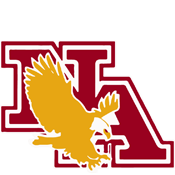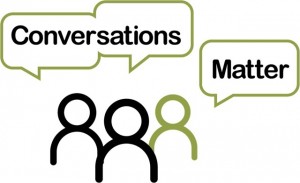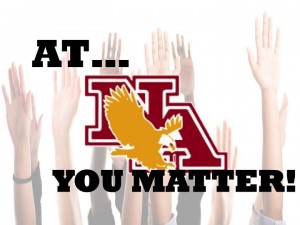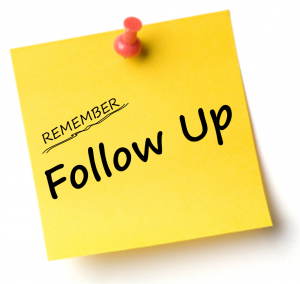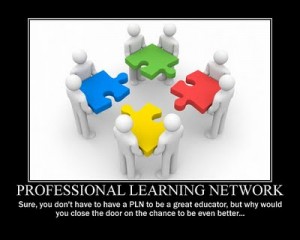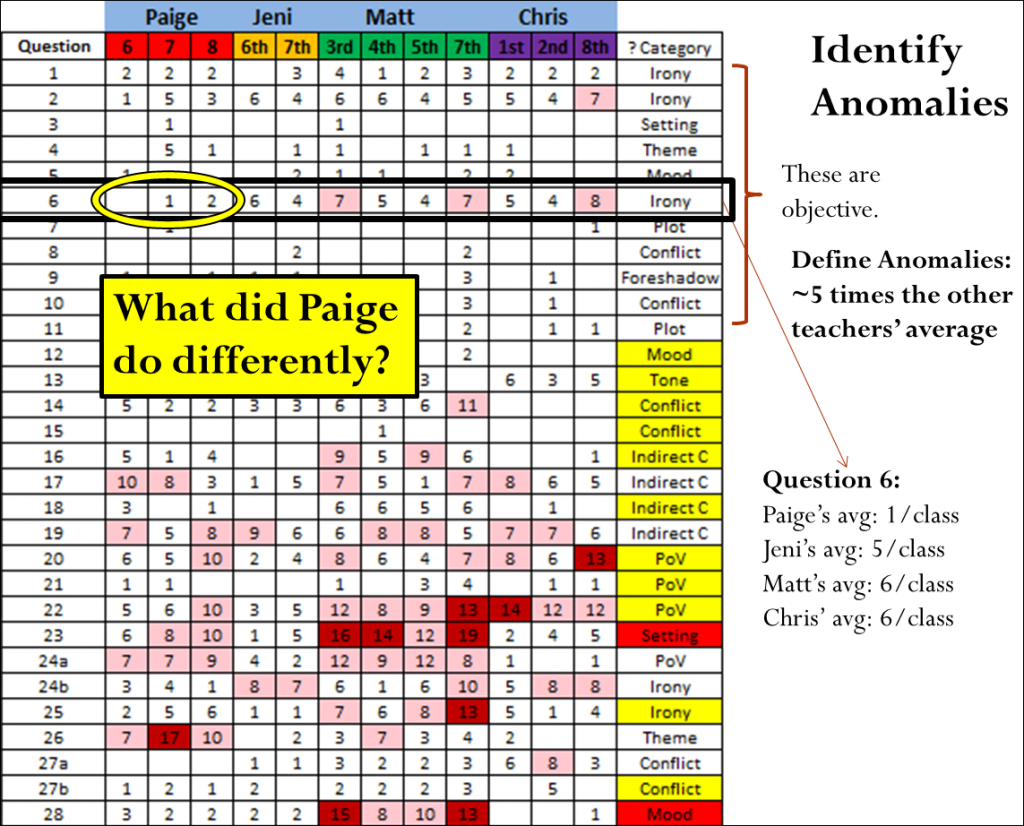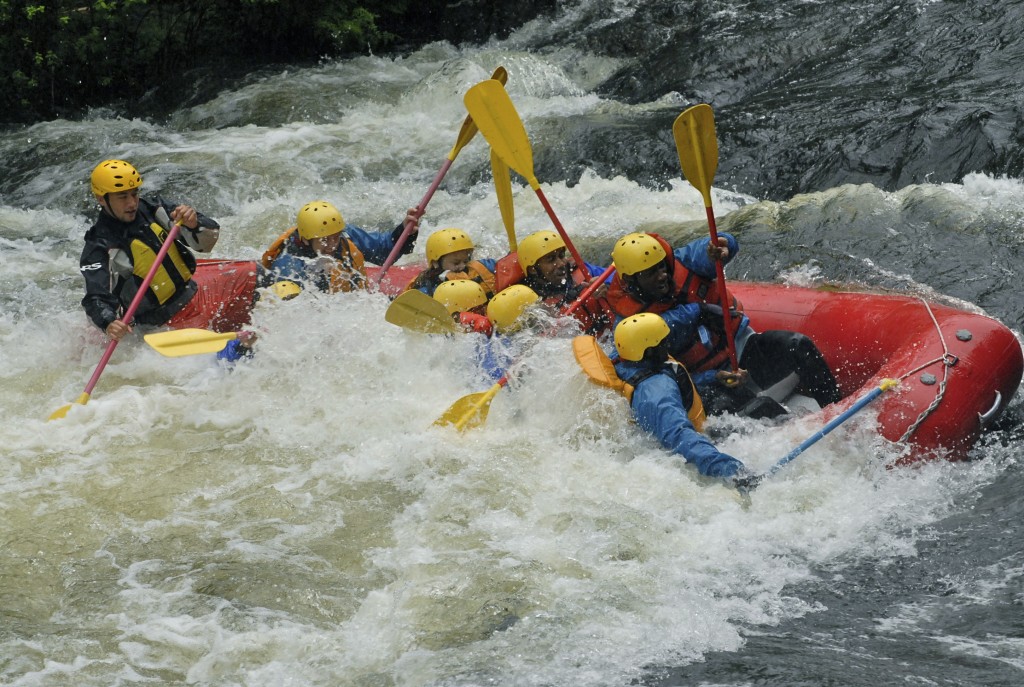Staff News
Congratulations to Concord Counselor, Brandy Smith, and her husband as they are expecting their first child!
Substitute teacher Shannon Book shared with me the following information to let me know how our students feel about our Math Department:
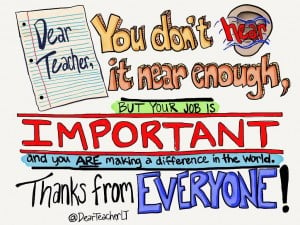 “I was subbing for Mrs. Morlan’s AP Calc AB class this morning and as the students were working diligently on a small group assignment, they started an impromptu discussion about how our math department is “stacked” (their actual quote) with talent. I overheard one student say, “Unfortunately, I got an A- that year but I learned so much I can’t complain.” The students named all of the teachers they had up to this point and they had great things to say about each one. Many of these kids plan to become engineers and, although they pointed out many people drop out of engineering programs after the first year, they felt they would be well prepared.
“I was subbing for Mrs. Morlan’s AP Calc AB class this morning and as the students were working diligently on a small group assignment, they started an impromptu discussion about how our math department is “stacked” (their actual quote) with talent. I overheard one student say, “Unfortunately, I got an A- that year but I learned so much I can’t complain.” The students named all of the teachers they had up to this point and they had great things to say about each one. Many of these kids plan to become engineers and, although they pointed out many people drop out of engineering programs after the first year, they felt they would be well prepared.
The best part about this conversation was it wasn’t prompted by anyone. It was a very candid and reflective conversation the students had on their own about the quality of education they have received at New Albany. Priceless.”
Students As Learners
Chemistry teacher Mary Cook facilitated a unique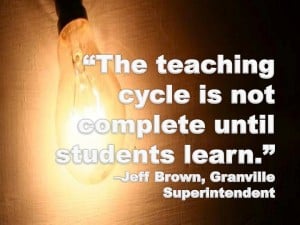 lab for her students a few days ago. It included formative assessment strategies that guided her instruction and required students to not just acquire knowledge, but also apply it to unknown situations. She states,
lab for her students a few days ago. It included formative assessment strategies that guided her instruction and required students to not just acquire knowledge, but also apply it to unknown situations. She states,
“College Prep Chemistry students are starting our unit on gas behavior and these lab stations are the first activity where students explore relationships between different variables by taking observations at different stations. After students collect observations, they identify the variables and constants for each station and then develop a particle level explanation and visual diagrams that support their collected evidence. Students then present their explanations at the particle level during white boarding group discussion to come up with the best explanation and visual representation (particle level and graphical). They then apply these explanations to more real world scenarios.”
 Spanish teacher Lisa Betts designed a lesson to help students apply the language to real-world scenarios during class last week. Following is a description of the activity:
Spanish teacher Lisa Betts designed a lesson to help students apply the language to real-world scenarios during class last week. Following is a description of the activity:
“My students were given the task of creating a skit with at least a doctor, nurse and patient. The patient had to seek help for at least two ailments; the doctor and nurse had to gather information from the patient about what was going on, what symptoms s/he has, what occurred, what injury they might have, how it happened, etc. An exam had to be given to ascertain a final diagnosis, and then the doctor had to give some sort of course of action to help the person feel better. It was a total riot!”
Art teacher Juliette Montague’s students have made significant progress in their drawing ability! She recently shared a few artworks as evidence of student growth for her Student Learning Objective. I applaud the students’ attention to detail and perseverance. Check out this brief video that captures where students started and where they are now!
made significant progress in their drawing ability! She recently shared a few artworks as evidence of student growth for her Student Learning Objective. I applaud the students’ attention to detail and perseverance. Check out this brief video that captures where students started and where they are now!
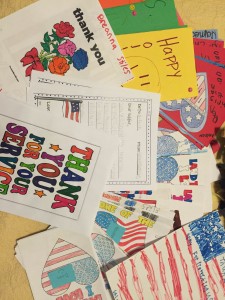
Intervention Specialist Taylor Pinnick used Veterans Day as an opportunity for her students to send a care package to her boyfriend’s unit in the Army National Guard, who are currently deployed. Students from the Special Education Department at New Albany, from elementary school to high school, as well as SLC F in the 2-5 building, wrote letters and created cards to send to the unit. Students collected over 100 cards to send, as well as some special treats to help with the heat!
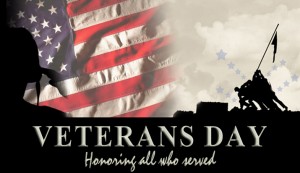
Humanities teachers Sara Hric and Rachel Braswell celebrated Veterans Day by asking students to interview a current soldier or veteran and capture their experience. This assignment corresponds with their reading of Homer’s Iliad and The Odyssey where they are discussing the experience of the soldier/veteran. Students will also participate in a Socratic Seminar to discuss their findings. I observed a few groups of students perform skits about scenes from The Odyssey and a major part of the skit summary was to explain the connection to the soldier as they highlighted Greek values.

The New Albany Eagles completed another fantastic fall sports campaign with multiple awards, honors and team accomplishments. Coming off a 6th consecutive Ralph Young all sports award, all eyes were on the Eagles as New Albany athletics has become the envy of central Ohio athletic programs. Of the 11 fall sports New Albany offers, all but 1 finished with a winning record. 15 Eagle athletes were named to the First Team All OCC-Capital teams, 12 were named to the Second Team All OCC-Capital teams, 1 to the Third Team All OCC-Capital, 3 to the Special Mention All OCC-Capital and 11 were named Honorable Mention ALL OCC-Capital.
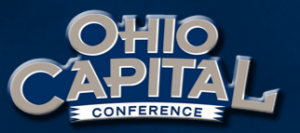
The boys golf team wrapped up their 6th consecutive OCC title by completing an undefeated OCC season (28-0). The boys golfers also wrapped up a terrific season by finishing 3rd in the sectional tournament and 6th at the district tournament. Girls tennis head coach Marc Thomas was named OCC-Capital Coach of the Year and Junior singles player Alex Cash was Sectional champion and a state qualifier. Cash was also named to the All State Tennis Team and Player of the Year in the OCC-Capital Conference Senior Amit Greenshtein was named Player of the Year in the OCC-Capital Conference for boys soccer. Four Eagle athletes were named to All District teams:
Alex Cash- girls tennis
Maddy Largent – volleyball
MiCayla Nash – volleyball
Kiana Khorrami – girls soccer
The girls soccer team, under 1st year head coach Kelly Snead, had a great tournament run finishing as District Runner Up with a tough 2-1 loss to Upper Arlington in the district final.

Senior football player Alex Boffo was named an OCC football scholar athlete. Junior girls tennis player Taylor Selby was a sectional runner-up. Junior Christina Vitellas and Sophomore Makena Romagnano tennis players were sectional runners up in doubles while Junior Jessica Von Zastrow and Freshman Valentina DiLorenzo placed 3rd in the girls sectional doubles tournament.
Aside from the boys golf OCC title, the girls tennis team were OCC runners up. Football, girls soccer and boys cross country finished 3rdin the OCC-Capital. Field Hockey finished 4th in their league. Boys soccer, volleyball and girls cross country finished 5th in the OCC-Capital and the girls golf team finished 6th.
Despite the target on all Eagle athletic teams, New Albany ended the fall season 3rd in the Ralph Young all sports race with 45 points; 12 points behind leader Olentangy and 10 points behind Olentangy Orange. Congratulations to our fall sports coaches and athletes!
Upcoming Events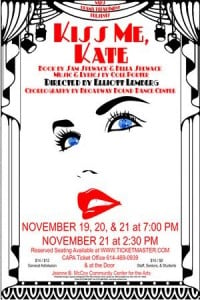
Monday, November 16th- #CelebrateMonday; BOE Meeting 6:30 pm Mershad Auditorium
Tuesday, November 17th- #BowTieTuesday
Thursday, November 19th-Kiss Me, Kate 7:00 pm McCoy
Friday, November 20th- Kiss Me, Kate 7:00 pm McCoy
Saturday, November 21st- Kiss Me, Kate 7:00 pm McCoy
Sunday, November 22nd- Kiss Me, Kate 2:30 pm
Video Worth Watching
What Students Really Need to Hear
Be Great,
Dwight
